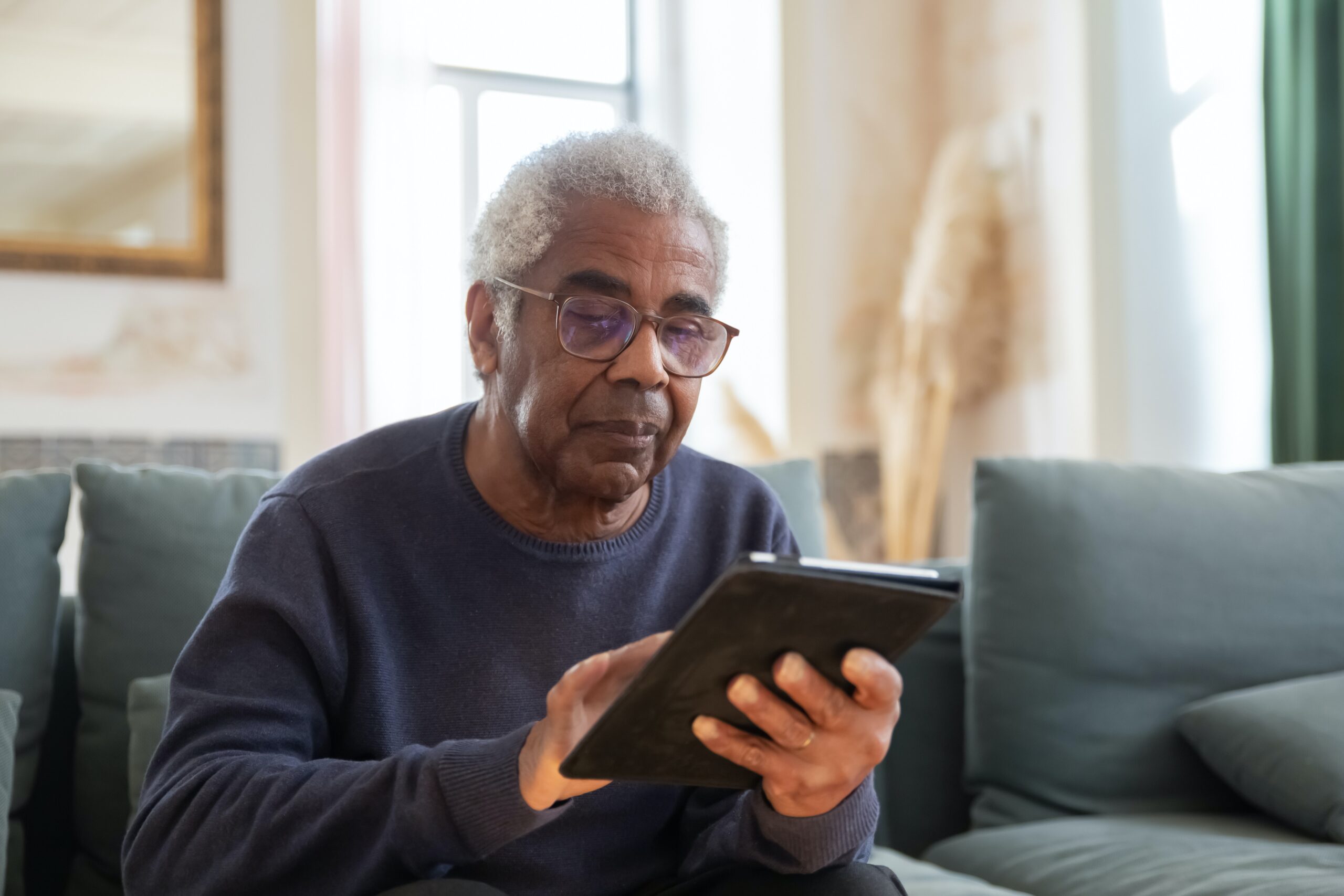
The ability to live in one’s home or community safely, independently and comfortably can reduce health care costs, avoid or delay admission to institutional care, and ease the stress on family caregivers.
Many older adults and their caregivers rely on technology to help them age in place. From Alexa-type devices to online grocery delivery to artificially intelligent sensors that monitor frailty, there’s no doubt that the right devices used correctly can increase safety and peace of mind for both elders and their caregivers.
With the population of people over age 60 growing and the number of caregivers shrinking, age tech — digital technology built around the needs and wants of older adults — is becoming a booming industry.The age tech market is expected to reach $2 trillion, according to The Gerontechnologist’s 2021 Age Tech Market Map.
Age tech can help older people (or caregivers) monitor just about everything — including medication schedules, when the fridge was last opened and how many times an elder got up to use the bathroom in the middle of the night. While many older adults are comfortable with and even embrace technology, there are also some downsides. Devices can be abandoned because they either fail to live up to initial promises or are too complicated, too invasive or just too much of a hassle, according to researchers. Some elders are uncomfortable with the trade-offs between additional safety and perceived or actual loss of privacy. And then, there are issues of affordability, access and the digital divide.
“For older adults, it’s imperative to provide an integrated smart solution, not just smart technology,” writes Laurie Orlov, founder of Aging and Health Technology Watch, where she provides analysis and guidance about trends that enable older people and boomers to improve their quality of life.
Orlov is one of the expert panelists for AHCJ’s upcoming webinar, Aging in place technology: challenges and trends, at 1 p.m. EST/10 a.m. PT on Wednesday, April 6.
What do families need to ensure their loved ones stay safe and healthy? Panelist Leslie Kernisan, M.D., M.P.H., a geriatrician, and founder of betterhealthwhileaging.net, will look at actual needs that arise when an older adult tries to age in place. What problems do they (and often, the family) end up trying to solve?
Speaking of solutions, Jeffrey Kaye, M.D., director of ORCATECH (Oregon Center for Aging & Technology) at Oregon Health & Science University and a professor of neurology and biomedical engineering at the university, will highlight ORCATECH’s Life Lab, which could be a national aging-in-place technology model. Kaye is leading a multi-site, nationwide study funded by the National Institutes of Health and the Department of Veterans Affairs.
Many people assume seniors aren’t interested in technology. But seniors have shown they can adjust to an ever-evolving technology landscape as well as other age groups, according to an article on SeniorLiving.org. According to the article, more than half of older adults bought a new tech product in 2019, such as a smartphone, laptop computer or smart home device. And an estimated 75% of older adults with an internet connection reported using it daily.
A recent University of Michigan survey asked people ages 50-80 about their use of and interest in mobile health apps. Twenty-eight percent reported using at least one mobile health app. Overall, 34% of older adults said they used or had used apps for exercise, 22% for nutrition, 20% for weight loss and 17% for sleep, according to the report.
Popular technology for seniors included food delivery service apps, transportation and ride-sharing mobile apps, and video chatting programs to keep up with grandchildren and others. There are even virtual retirement communities in which seniors can stay in their own homes but be part of a membership organization that helps seniors make medical appointments, or get a handyman to make repairs.
Some 268 such “villages” with more than 40,000 members exist in the U.S., and an additional 70 are in development, Kaiser Health News reported recently. They’re not yet a mass-market option for aging in place, the article said, but they offer social connection through forums such as discussion groups, classes, or outings, or other social events.
Journalists attending the webinar should walk away with a variety of story angles and ideas from experts. We hope you can join us!
Resources
- AgeWell: Canada’s technology and aging network
- Technology for Aging 2022 Market Overview — insight from Laurie Orlov.
- What is the biggest benefit technology will have on aging? — an article from the World Economic Forum.
- Aging 2.0 — an age tech incubator with a volunteer-run network of chapters in 130+ cities in 31 countries.
- An Aging-in-Place Strategy for the Next Generation— an article from the Boston Consulting Group.
- Aging in Place: Growing Older at Home — guidance from the National Institute on Aging.
- AgeTech Collaborative — an effort from AARP to connect AgeTech startup companies with investors.






